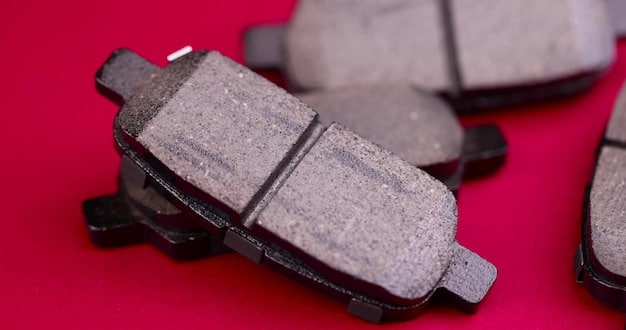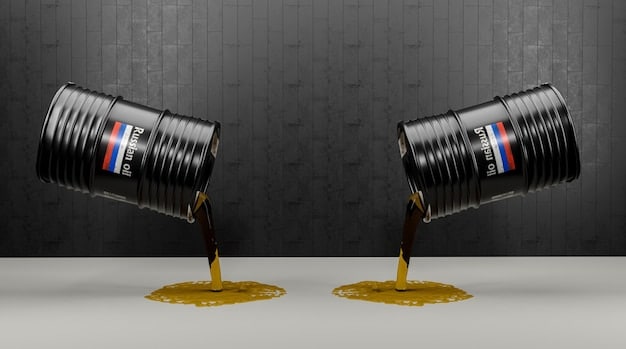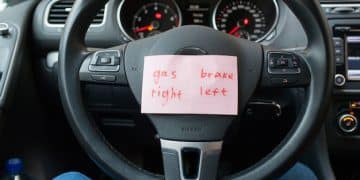Urgent Warning: Counterfeit Auto Parts Flood the Market, Posing Safety Risks

The automotive industry is facing an urgent threat as counterfeit auto parts flood the market, posing significant safety risks to consumers and potentially leading to vehicle damage or accidents.
The safety of your vehicle depends on the quality and reliability of its components, but what happens when those parts are not what they seem? The rise of counterfeit auto parts is a growing concern, threatening not only your vehicle’s performance but also your safety on the road.
Urgent Warning: The Rise of Counterfeit Auto Parts
The prevalence of counterfeit auto parts is on the rise, creating a dangerous situation for vehicle owners. These fake parts, often manufactured with substandard materials and without proper quality control, can lead to serious safety issues and costly repairs.
Understanding the scope of this problem and how to identify these dangerous fakes is crucial for protecting yourself and your vehicle.
The Scope of the Counterfeit Auto Parts Market
The counterfeit auto parts market is a global issue, with fake components infiltrating supply chains and reaching consumers through various channels. The economic incentives for counterfeiters are high, as they can produce and sell these parts at a fraction of the cost of genuine components.
- Global Reach: Counterfeit auto parts are found in markets around the world, affecting both developed and developing countries.
- Economic Impact: The sale of fake parts undermines legitimate businesses and contributes to significant financial losses for the automotive industry.
- Consumer Vulnerability: Many consumers are unaware of the risks associated with counterfeit parts, making them vulnerable to purchasing these dangerous products.
The issue is further complicated by the difficulty in distinguishing counterfeit parts from genuine ones, especially for consumers who may not have the technical expertise to identify subtle differences.

Safety Risks Posed by Fake Auto Parts
When you install a counterfeit part in your vehicle, you are essentially gambling with your safety and the safety of others. These parts are not tested to the same standards as genuine components and can fail prematurely or unexpectedly, leading to accidents.
From brake pads to airbags, critical safety components are being counterfeited, putting lives at risk.
Critical Safety Components at Risk
Several critical safety components are commonly counterfeited, including brake pads, airbags, and tires. These parts are essential for the safe operation of a vehicle, and their failure can have catastrophic consequences.
- Brake Pads: Fake brake pads may have reduced stopping power, leading to longer stopping distances and increased risk of collisions.
- Airbags: Counterfeit airbags may not deploy properly or at all, failing to protect occupants in the event of a crash.
- Tires: Fake tires may have poor grip and be prone to blowouts, increasing the risk of accidents, especially at high speeds.
Beyond these, other parts such as filters, lights, and sensors are also commonly counterfeited, affecting the overall performance and safety of the vehicle.
How to Identify Counterfeit Auto Parts
Protecting yourself from counterfeit auto parts requires vigilance and awareness. By knowing what to look for, you can significantly reduce your risk of purchasing fake components.
Inspect the packaging, examine the part itself, and trust your instincts to avoid falling victim to counterfeiters.
Packaging and Labeling Clues
The packaging of a counterfeit auto part often contains clues that can help you identify it as fake. Look for inconsistencies in branding, spelling errors, and poor-quality printing.
Ensure that the packaging is intact and that the labels are securely attached. Counterfeiters often cut corners in packaging, resulting in a subpar presentation.
Examining the Part Itself
The part itself may also reveal inconsistencies or defects that indicate it is counterfeit. Check for irregularities in the finish, rough edges, and mismatched materials.
- Finish: Genuine parts typically have a smooth, consistent finish, while counterfeit parts may have imperfections or inconsistencies.
- Markings: Authentic parts usually have clear and precise markings, including part numbers and manufacturer logos. Fake parts may have blurry or missing markings.
- Weight: Counterfeit parts may be noticeably lighter or heavier than genuine components due to the use of substandard materials.
Comparing the part to a known genuine component can also help you identify subtle differences that indicate it is fake.

The Impact on Vehicle Performance and Longevity
Using counterfeit auto parts can have a significant impact on your vehicle’s performance and longevity. These parts are not designed or manufactured to the same standards as genuine components and can cause premature failure or damage to other parts of the vehicle.
Investing in genuine parts is an investment in the long-term health of your vehicle.
Reduced Performance and Efficiency
Counterfeit parts can reduce your vehicle’s performance and efficiency, leading to decreased fuel economy and reduced power output. Engine components, such as filters and spark plugs, are particularly susceptible to this issue.
Fake filters may not effectively remove contaminants, leading to increased wear and tear on the engine. Similarly, counterfeit spark plugs may not provide optimal ignition, resulting in reduced power and fuel efficiency.
Increased Risk of Damage
The use of counterfeit parts can also increase the risk of damage to other parts of your vehicle. When one component fails, it can put additional stress on other parts, leading to a domino effect of failures.
- Engine Damage: Fake oil filters can allow contaminants to circulate through the engine, causing premature wear and damage to critical components.
- Brake System Failure: Counterfeit brake pads can damage rotors and calipers, leading to brake system failure.
- Electrical Problems: Fake electrical components can cause shorts, fires, and damage to the vehicle’s electrical system.
Genuine parts are designed to work together seamlessly, ensuring optimal performance and reducing the risk of damage.
Legal and Regulatory Efforts to Combat Counterfeiting
Governments and industry organizations are taking steps to combat the sale of counterfeit auto parts through legal and regulatory efforts. These efforts aim to protect consumers, prevent the spread of fake parts, and hold counterfeiters accountable for their actions.
By increasing enforcement and raising awareness, these efforts are making progress in the fight against counterfeiting.
Increased Enforcement and Penalties
Law enforcement agencies are increasing their efforts to identify and prosecute counterfeiters. Penalties for selling counterfeit auto parts can include fines, imprisonment, and asset forfeiture.
By cracking down on counterfeit operations, authorities are sending a message that counterfeiting will not be tolerated.
Raising Awareness and Education
Industry organizations and consumer advocacy groups are working to raise awareness about the risks associated with counterfeit auto parts. Educational campaigns inform consumers about how to identify fake parts and where to buy genuine components.
- Public Service Announcements: Educational videos and articles highlight the dangers of counterfeit auto parts.
- Industry Partnerships: Automotive manufacturers and retailers collaborate to promote the use of genuine parts.
- Consumer Resources: Online resources provide information about identifying and avoiding counterfeit auto parts.
By empowering consumers with knowledge, these efforts can help reduce the demand for counterfeit parts and protect vehicle owners from unnecessary risks.
Protecting Yourself: Tips for Buying Genuine Auto Parts
Protecting yourself from counterfeit auto parts requires a proactive approach. By following a few simple guidelines, you can significantly reduce your risk of purchasing fake components and ensure the safety and reliability of your vehicle.
Buy from reputable sources, inspect the parts carefully, and trust your instincts to avoid falling victim to counterfeiters.
Buy from Reputable Sources
Always buy auto parts from reputable sources, such as authorized dealers, established retailers, and trusted online vendors. Avoid buying parts from unknown sellers or unverified sources, as these may be more likely to sell counterfeit components.
- Authorized Dealers: Purchase parts directly from authorized dealers for your vehicle’s brand.
- Established Retailers: Buy from well-known auto parts retailers with a proven track record.
- Trusted Online Vendors: Use reputable online marketplaces and vendors with positive customer reviews.
When in doubt, contact the manufacturer of the part to verify the legitimacy of the seller.
| Key Point | Brief Description |
|---|---|
| ⚠️ Risks of Fake Parts | Counterfeit parts cause safety hazards like brake failure and airbag malfunction. |
| 🔍 Identifying Fakes | Check for poor packaging, incorrect markings, and substandard materials. |
| 💰 Performance Impact | Fake parts reduce fuel efficiency and increase the risk of engine damage. |
| 🛡️ How to Protect | Buy from authorized dealers and inspect parts thoroughly before buying. |
Frequently Asked Questions (FAQ)
▼
Counterfeit auto parts do not adhere to any safety standards, often using substandard materials. This can cause premature failure and potential safety hazards, such as brake failure or airbag malfunction, putting drivers and passengers at risk.
▼
Examine the packaging for inconsistencies, misspellings, or poor print quality. Inspect the part itself for irregularities, rough edges, and mismatched materials. Compare the part to a genuine component, if possible, to identify any subtle differences.
▼
Critical safety components, such as brake pads, airbags, and tires, are commonly counterfeited due to their high demand and potential for profit. Other frequently copied parts include filters, spark plugs, and sensors.
▼
To minimize the risk of purchasing counterfeit auto parts, buy from reputable sources, such as authorized dealers, established retailers, and trusted online vendors. Avoid unknown sellers and unverified sources.
▼
Sellers of counterfeit auto parts can face serious legal consequences, including fines, imprisonment, and asset forfeiture. Law enforcement agencies are increasing their efforts to identify and prosecute counterfeiters to protect consumers and the automotive industry.
Conclusion
The surge in counterfeit auto parts presents a grave danger to vehicle owners and the automotive industry. By staying informed, being vigilant, and sourcing parts from trusted suppliers, you can protect yourself from the risks associated with fake components and ensure the safety and longevity of your vehicle. Always prioritize safety and reliability when it comes to auto parts.





